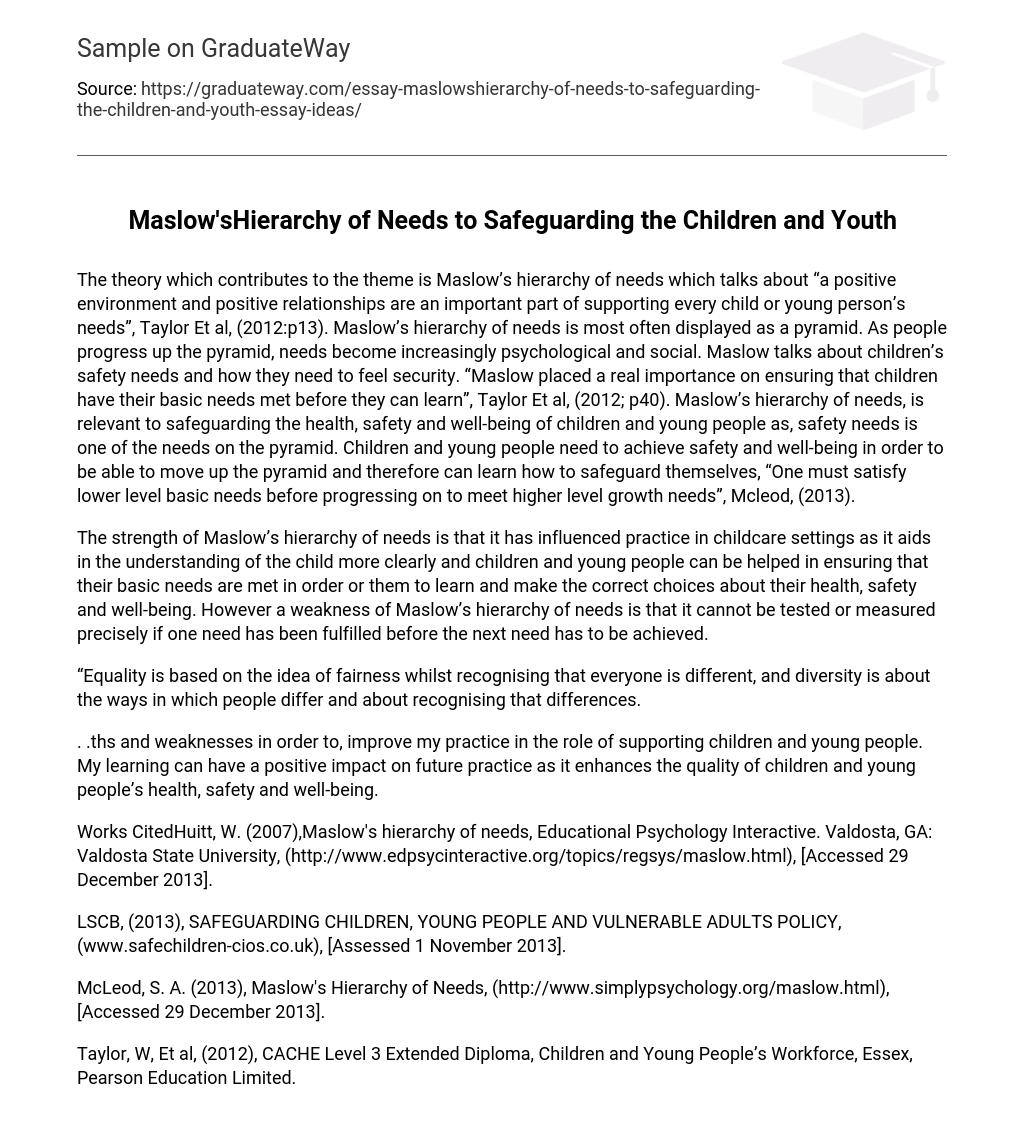The theory that contributes to the theme is Maslow’s hierarchy of needs. According to Taylor Et al (2012:p13), Maslow’s hierarchy of needs emphasizes the importance of a positive environment and positive relationships in supporting the needs of every child or young person. The hierarchy is often depicted as a pyramid, with needs becoming increasingly psychological and social as one progresses. Maslow also emphasizes the importance of children feeling secure in their safety needs, stating that basic needs must be met before learning can occur (Taylor Et al, 2012; p40). This hierarchy is relevant to safeguarding the health, safety, and well-being of children and young people, as safety needs are a key part of the pyramid. To progress up the pyramid and learn how to safeguard themselves, children and young people must first achieve safety and well-being (Mcleod, 2013).
The significance of Maslow’s hierarchy of needs lies in its impact on childcare practice. It facilitates a clearer comprehension of children and enables them to have their fundamental needs met systematically. This, in turn, supports their ability to learn, make appropriate health and safety decisions, and maintain overall well-being. However, a limitation of Maslow’s hierarchy is its inability to be precisely tested or measured to determine if one need has been fulfilled before progressing to the next.
Equality is grounded in the concept of fairness while acknowledging that every individual is unique. Diversity pertains to the various ways in which people differ, emphasizing the importance of recognizing and valuing these differences.
I aim to identify my strengths and weaknesses in order to improve my practice in supporting children and young people. By enhancing my learning, I can have a positive impact on the future practice of enhancing the quality of children and young people’s health, safety, and well-being.
Works Cited Huitt, W. (2007), Maslow’s hierarchy of needs, Educational Psychology Interactive. Valdosta, GA: Valdosta State University, (http://www.edpsycinteractive.org/topics/regsys/maslow.html), [Accessed 29 December 2013].
The website www.safechildren-cios.co.uk has a policy called “Safeguarding Children, Young People and Vulnerable Adults Policy” which was assessed on 1 November 2013 by LSCB (2013).
McLeod, S. A. (2013), Maslow’s Hierarchy of Needs, http://www.simplypsychology.org/maslow.html, [Accessed 29 December 2013].
The book “CACHE Level 3 Extended Diploma, Children and Young People’s Workforce” written by Taylor, W, Et al in 2012 is published by Pearson Education Limited in Essex.





